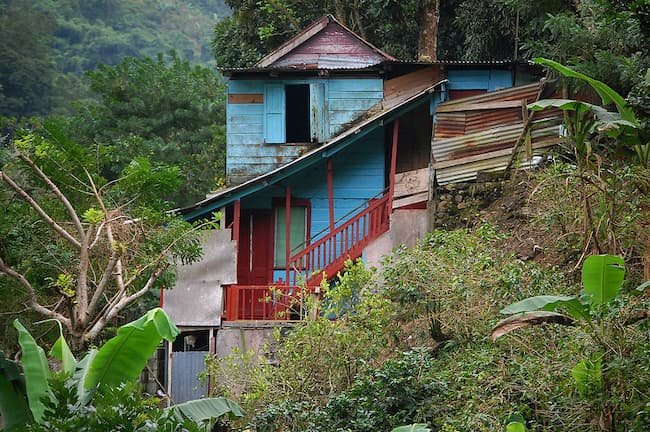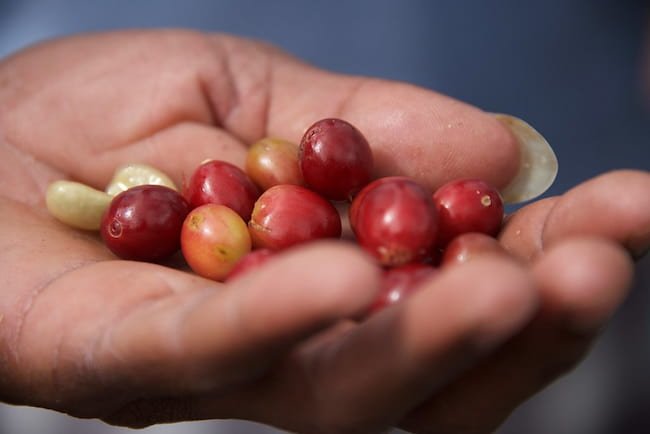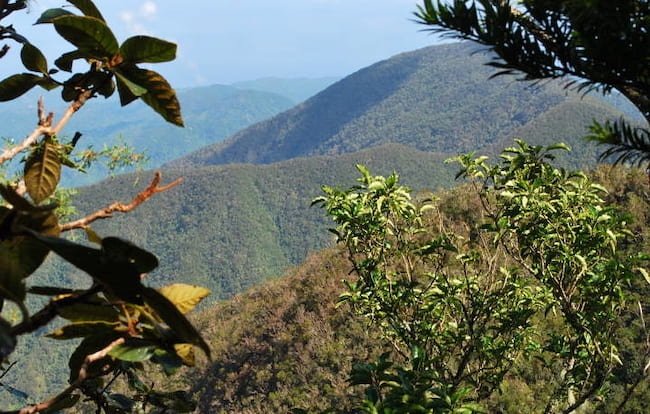Over the years, numerous “specialty” coffees have made it into the mainstream conversation. Names such as Kona, Geisha, Kopi Luwak – and especially Blue Mountain all have a certain “brand” value in the general population.
It would not come as a surprise if unscrupulous coffee companies would take advantage of this.
After all, most consumers don’t have a sophisticated enough palate or enough industry knowledge to notice any difference between genuine, high-scoring specialty lots and middling imitators.
A prime example of this is the Hawaiian Kona coffee, famed for its price tag and exclusivity. Many coffee lovers stand by it, professing a lot of its virtues as superior coffee and attributing them as the reason for the hefty price.
Another coffee with a cult following is the Jamaican Blue Mountain (JBM), touted as the “King of Coffee”.
It has a veil of mystery and intrigue that makes its reputation seem almost mythical. For better or for worse, JBM rides the same hype afforded to Kona and Kopi Luwak.
So the main question is: Does Blue Mountain live up to its reputation, or is it another one of those coffee celebrities that are all glitter but no shine? 🤔
To answer that we need to dive in a little deeper.
What is Blue Mountain Coffee?
The mystique of Blue Mountain coffee starts with its very name.
Is coffee really grown on a blue mountain?
And does this “blueness” really make the coffee superior?
Well, not really…
The name “Blue Mountains” refers to a mountain range in the eastern region of Jamaica. These mountains look like many other mountains across the world, so one could probably describe them as a mix of green, grey, or blue depending on many factors – for example, the time of the day, the ratio of sunlight to clouds, etc.
However, when seen from a distance, they can certainly have a somewhat blue tint. This is due to being shrouded in an almost perpetual mist.

History of Blue Mountain Coffee
Coffee was introduced to Jamaica by then-governor Sir Nicholas Lawes back in 1728. It was said to be a gift from the governor of Martinique, a neighboring island in the Caribbean.
The arabica coffee plant was first planted at Temple Hall, St. Andrew and eventually spread to other areas of the Blue Mountains.
The soil, elevation, and climate of Jamaica’s Blue Mountains were so favorable to coffee cultivation that they gave birth to a growing coffee industry. It expanded rapidly as United Kingdom reduced tariffs, which made coffee consumption rise.
The Blue Mountains only produce arabica coffee, most of which is of the Typica variety. A unique mutation developed in the Blue Mountains and became known as Coffea arabica var. blue mountain. This varietal is also grown in Kenya, Hawaii, Papua New Guinea, and Cameroon.
Today, (at least officially) Blue Mountain coffee can only be grown in a specific area and altitude within this mountain range. The land includes the parishes of St. Andrew, St. Thomas, Portland, and St. Mary, all of which are between an altitude of 3,000-5,000 feet above sea level.
- By the late 1700s, there were over 600 coffee plantations in Jamaica with about 70,000 acres for cultivation.
- By the early 1800s, Jamaica became one of the top coffee producers in the world. However, this didn’t last very long. After the emancipation of slaves during the 1830s, there was a decline in production: worsened by other factors such as price fluctuations, competition for labor with sugar plantations, and poor soil maintenance. From over 600 plantations, it dwindled to just over 150. While some estates continued to produce output for the succeeding decades, Jamaica no longer regained its leading position as a coffee-producing country.
- In the 1940s as growing concerns regarding Jamaica’s coffee quality and consistency led to the loss of valuable international markets. It became the final straw that propelled the creation of the Coffee Industry Board in 1953. This governing body streamlined production and marketing and standardized quality control measures. Coffee became heavily regulated. The country was still unable to produce massive quantities of coffee; however, the quality and consistency soared. This improvement helped them develop a reputation and a cult following, and the rest is history.
Why are the Japanese so crazy about Blue Mountain? 🤔 🇯🇵
Part of the rarity of Jamaica Blue Mountain is the huge percentage of it being shipped straight to Japan, ranging from 60%-85% of Jamaica’s total production each year. The rest of the world has to make do with whatever percentage remains. But what’s up with that chunk of coffee going to the Japanese?
Most people might not be aware of the longstanding diplomatic relations between Jamaica and Japan, formally established in 1964.
This relationship enabled them to form solid economic alliances that benefited each country. JBM was first imported to Japan in the early 1950s when Japan started its economic recovery after World War II. At the time, the local roasters in Japan promoted Blue Mountain as the coffee that the British royalty drank. This claim intrigued the locals and added more appeal to the product.
As Jamaica’s quality control programs became more rigorous—producing cleaner and more consistent coffee—Blue Mountain coffee soon grew popular in Japan. Imports rose in the subsequent years, reaching 90% by the late 1980s.
Starting in 2018, Japan designated January 9 as its Jamaican Blue Mountain Coffee Day.
The coffee culture in Japan boomed as it became one of the top-consuming countries worldwide. But Jamaica Blue Mountain holds a special status for many Japanese, referring to it as the “king of coffee.” So much so that Ueshima Coffee Company (UCC)—a Japanese coffee company—invested in Jamaican coffee in the 1980s by purchasing their own estate in the Blue Mountains.
The continual patronage and support of Japanese importers further strengthened the Jamaican Blue Mountain coffee industry as it grew the reputation it now holds today. Starting in 2018, Japan designated January 9 as its Jamaican Blue Mountain Coffee Day.

Is Blue Mountain Coffee the best in the world?
Let’s get to the core of the issue surrounding this coffee: is it truly worth the price?
The short and simple answer is: No.
Despite the hype, these coffees fail to impress plenty of industry professionals on the cupping table. At best, they offer a decent coffee experience, but they are still leagues away from the best of what the coffee world can offer.
Set aside the low supply, the rigors of production, processing, and certification—all of which understandably drive the prices higher. You will find a celebrity status assigned to this product that makes it even more desirable to consumers. It is true for many high-profile brands who rely heavily on their reputation to attract buyers. A lot of effort is put into effective branding to lend the product a luxurious, premium feel.
But businesses need powerful marketing to grow. The renown of Blue Mountain’s name does not automatically indicate it is all fabricated, a massive scam, nothing more but a bad-tasting coffee.
Then what is it?
Simply this: a coffee of limited supply that possesses a generally clean and mild taste profile.
No sparks, no fireworks, nothing to catch you off-guard.
At its best, Blue Mountain coffee exemplifies harmony and balance in a cup. These are not undesirable traits in a coffee, but they aren’t exactly inspiring. Not enough to make you think it is a premium coffee experience proportionate to the price you paid.
At its best, Blue Mountain coffee exemplifies harmony and balance in a cup
Not all coffees are created equal: some have better genes (geisha for example), some have better growing conditions, some have better farmers and producers, and so on.
Jamaican Blue Mountain coffee is not a scam, but it’s also not the creme de la creme of the coffee industry. And really, that’s okay. Some people still find JBM enjoyable and would happily pay for it.
Blue Mountain “blend” Scams
While the genuine JMB might not be a scam, there are certainly other coffees trading under the name that are.
The lack of character-defining traits can make Blue Mountain somewhat easy to duplicate. It has been susceptible to counterfeits and imitations. There are already several products on the market claiming to be a Blue Mountain “blend” or a Blue Mountain “style” coffee. Both of these can have little to no real Blue Mountain coffee in them.
Since the Blue Mountain cultivar mutated from Typica, it shares the general attributes typical to the varietal. This similarity appears in some of the milds from Central America, Latin America, and the Pacific. What’s fascinating is this same Blue Mountain cultivar was taken to Papua New Guinea by its British administrators for coffee cultivation in the early 20th century. It won’t come as a surprise if many of today’s PNG coffees have a similar flavor profile to Blue Mountain.
Comparisons are bound to arise typically against other marketing giants such as the Hawaiian Kona. Patrons of each side argue in favor of their preferred coffee, while others think both Kona and Blue Mountain are not worth the amount of praise and prices they receive.
As far as cup quality, there isn’t much competition between the two: both are mild and smooth coffees, barely offering any distinctive attributes. Both also command high prices, but if we stack them up against their corresponding quality, Kona appears to be the more reasonable choice. In the end, consumers want value for their money. A product that derives its value chiefly from its name will make consumers feel robbed of what could have been a memorable coffee experience.
Coffee Estates in Jamaica
The Jamaican Coffee Industry Board has detailed the specifics of growing and producing Blue Mountain coffee to ensure quality and consistency. Once the coffee is certified by the board, it is given the trademark seal on its packaging. The restricted growing area and altitude naturally narrowed down the number of coffee estates and regions legitimately producing Blue Mountain. Here are some of the more notable ones:
Clifton Mount
Situated on the eastern slope of Catherine’s Peak in the Blue Mountains, Clifton Mount is one of the oldest functioning coffee estates in Jamaica dating back to the 1790s. Today it has become a fully operational processing facility after installing a mill inside the property. This internal processing enabled them to offer an estate coffee. The estate is Rainforest Alliance-certified.
Wallenford
This coffee company has operations that span two parishes in the Blue Mountains: St. Andrew and Portland. They are historically known to be the largest cultivator of JBM on account of around 5,000 acres of land they control. The company functions primarily as a coffee mill that procures its coffee from small producers and carries out the first stage of coffee processing in their own pulping factories.
Clydesdale
A notable coffee-growing region on the southern slopes of the Blue Mountains and is in the parish of St. Andrew. Clydesdale was one of the first coffee estates in Jamaica, founded in the late 1700s by a British national. Today, the estate is no longer operational and has been designated a National Heritage Site by the Jamaican government. It remains a coffee-growing region farmed by smallholder farmers.
Craighton
Located in Irish Town, St. Andrew, Craighton estate dates back to the 1800s when it was constructed and produced coffee. In 1981, Ueshima Coffee Company (UCC)—a major Japanese coffee company—purchased the estate to create a stable supply of Blue Mountain to Japan. True to their mission, Japan receives most of the exported coffee beans from Craighton Estate. The estate is Rainforest Alliance-certified.
Flamstead
This estate is in the parish of St. Andrew in the Blue Mountains. Coffee has reportedly been grown in the area since 1764. The estate was established later on in 1982 after Ambassador Dunkley acquired it for coffee farming. Today, the sons of Ambassador Dunkley manage the estate. Their facility involves farming, drying, and milling coffee.
Greenwich
This small coffee estate boasts 100% self-sufficiency: growing their own seedlings, processing the coffee cherries, and roasting the coffee beans for retail. Because of this, they refer to their Blue Mountain as a “single estate coffee” because it does not contain beans from other farms.
Top Featured Image: Diego Tirira – Flickr CC 2.0
